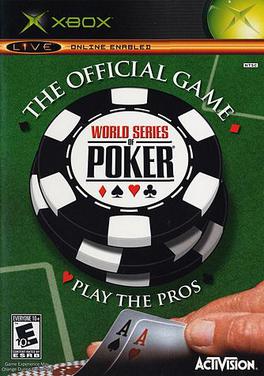 Blockbuster generic entries are starting to look an awful lot like high stakes poker games. If you like risky bets, high stakes, bluffs and misdirections, it's all here. The one big difference: the game usually ends with both players splitting the pot in the form of a settlement, rather than continuing until one player goes bust.
Blockbuster generic entries are starting to look an awful lot like high stakes poker games. If you like risky bets, high stakes, bluffs and misdirections, it's all here. The one big difference: the game usually ends with both players splitting the pot in the form of a settlement, rather than continuing until one player goes bust.
Consider the latest blockbuster generic settlement involving the asthma therapy budesonide (Pulmicort). If ever there was a wild round of Texas hold ‘em, this was it. (In case you missed the drama, “The Pink Sheet” covered it all: here and here.)
First, the players. AstraZeneca, markets Pulmicort Respules, which brings in almost $1 billion in the US each year. Teva, the first to file for approval of a generic version of the product, challenging AZ’s patent on the use of budesonide for asthma that run until 2019.
Teva filed its ANDA in 2005. AZ, naturally, sued to enforce its patents, and almost as naturally, filed a citizen petition urging FDA not to approve the generic without issue a guidance explaining bioquivalence standards for locally acting oral inhalations like budesonide. And so the game began.
The real action only started a couple weeks ago, when FDA rejected AZ’s petition and approved Teva’s generic application.
Once upon a time, no generic company would risk launching until the underlying patent case was resolved. In theory, at least, an “at-risk” launch exposes the generic firm to treble damages, meaning it could have to pay back three times whatever it earns from the launch. Those days are over, thanks to consolidation giving generic companies more resources to at least contemplate facing a large damages award—and, more importantly, an increasing sense that innovator companies would much rather settle than press on to a verdict.
In other words, generics have learned to call the innovator’s bluff.
That, at least, is what Teva did: announcing November 17 that it was shipping the generic. That should not have come as a surprise, since Teva pioneered in using an “at risk” launch strategy with products like Neurontin and Protonix.
Rather than fold, AZ raised the stakes. It announced its own plans to launch an “authorized” generic via an agreement with Par. That too has become standard practice among innovators—though it’s a bit like dealing a third player in halfway through the hand. AZ also filed for a preliminary injunction to halt Teva’s launch.
And AZ got the injunction.
Here’s where things get really interesting. Thanks to the ever evolving series of precedents governing generic launches, Teva’s “at risk” launch was riskier than usual, since, in theory at least, it triggered the company’s exclusivity period for the generic. Those 180 days are precious, basically representing the entire value of challenging a patent. So, in addition to the threat of damages if it lost the patent case, Teva faced the potential of watching its opportunity to profit from a victory slip away, day by day, while litigation continued.
Assuming, of course, that Teva wasn’t bluffing. If Teva really truly launched the generic—shipped it all the way to pharmacies and into the marketplace, the exclusivity clock started ticking. If, on the other hand, Teva announced the launch, took orders, even collected money from potential buyers—but didn’t ship product out of its control—then the clock didn’t start ticking. Teva, naturally, wasn’t about to shed any light on exactly what it did or did not do; would you show your hole cards to an opponent in the middle of the hand?
So the two players stared each other down for a week and then settled. The terms: Teva will launch its generic under license to AZ in December 2009, and pay an undisclosed royalty back to AZ. There will be no other authorized generic allowed. Its liability from the at-risk launch is waived, and product already shipped stays in distribution. (Aha! Teva wasn’t bluffing the launch, apparently.)
Here’s where the poker analogy breaks down. It looks to us like both sides won.
Teva gets six months of generic exclusivity essentially guaranteed. Yes, it has to wait an extra year to cash in, but that is an easy trade to make. Yes, it has to pay a royalty back to AZ, but with a truly exclusive position, that shouldn’t be too big a deal.
For AZ, the settlement buys an extra year of exclusivity for Pulmicort—and removes the uncertainty posed by Teva’s pending challenge. True, AZ faces generic competition long before its use patent on Pulmicort expires, and will end up with only nine years of life on the brand. But the basic budesonide patent has already expired, and pharma companies have not had much success in defending brands protected only by secondary patents. So nine years of exclusivity on Pulmicort isn’t a bad outcome for the company—and it is one more year than AZ had two weeks ago.
Okay, Par lost the opportunity to share in the Pulmicort launch, but it was playing with house money anyway.
Nope. The only ones who can claim to be losers here are the people who buy Pulmicort and think they should be able to get a generic alternative before the end of next year. But they aren’t even players in this game.
Thursday, December 04, 2008
Wacky World of Generics: Pulmicort Edition
Subscribe to:
Post Comments (Atom)


No comments:
Post a Comment